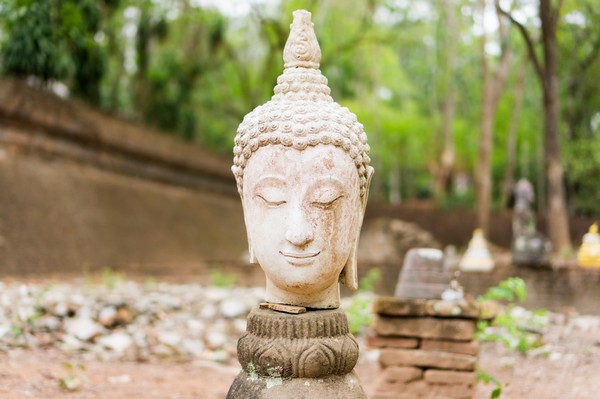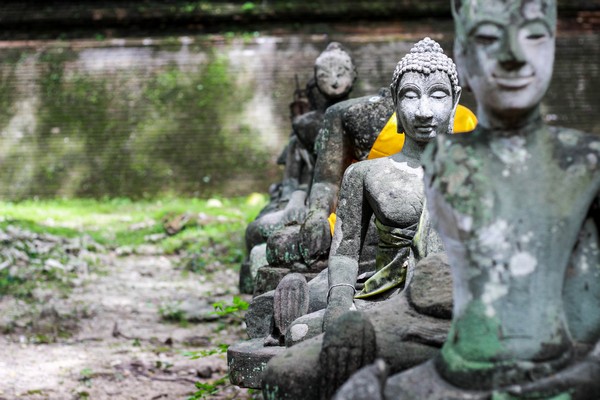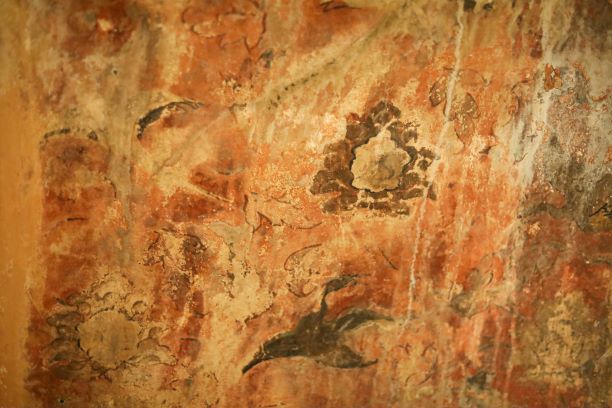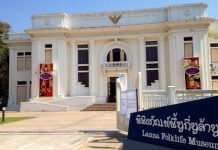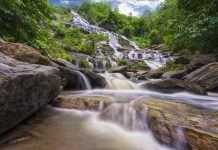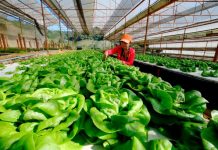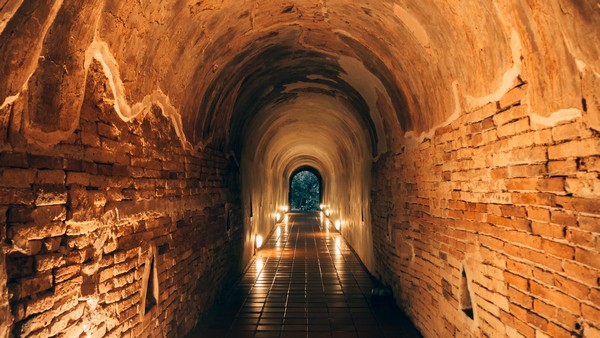
Wat Umong (Suan Putthatham), the aesthetic arts in an ancient temple covering with greenery moss.
Apart from the natural resource of the sightseeing in Chiang Mai that attracts lots of tourists both local and from over the world to visit this historic city. Chiang Mai is well-known as the location of numerous magnificent temples with unique architectural of art. And here we would like to present you to another ancient temple that has existed with Chiang Mai for more than seven centuries “Wat Umong” or the Tunnel Temple.
Background of Wat Umong (the Tunnel Temple)
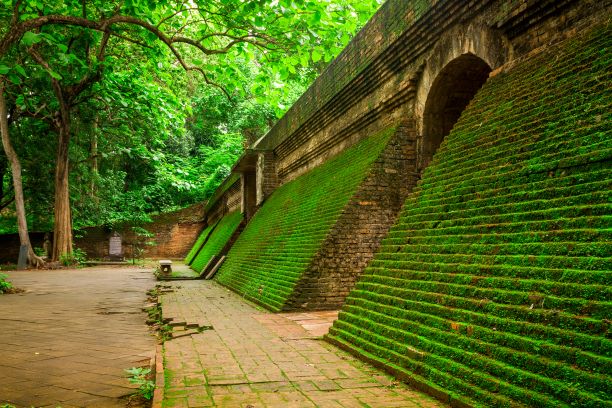
In the year 1296 estimate, “King Mangrai” established the Lanna Kingdom together with his companions “King Ramkhamhaeng” of the Sukhothai Kingdom and “King Ngam Muang” the ruler of Payao. Also, they founded Wieng Muang Lek (currently the compound of Wat Chiang Man) and named the district as “Nopburi Srinakornpingka”. King Mangrai is a king who esteems deeply in Buddhism; therefore, he maintained and supported the Buddhism religious to be flourished in the kingdom of Lanna at that time. Whereas, King Ramkhamhaeng sent the officers to invite the Buddhist monks from Lanka to reside at Nakhon Si Thammarat, accordingly to let the monks spread the Buddhism in the Sukhothai Kingdom.
Clarifying the Names of Wat Umong
Wat Welukattharam ; King Mangrai
And once King Mangrai acknowledged the news hence the king sent the officers to invite the Lankan monks from King Ramkhamhaeng in about 5 monks which “Phra Kassapa Thera” is the leader of the group. The group of Buddhist monks resided at Wat Kan Thom” at first, and then King Mangrai made Wat Welukattharam” (currently is Wat Umong). When the monastery completed, then he invited Gassapa Thera and the fellow monks to dwell at the temple.
Wat Umong Thera Chan ; Phra Maha Thera Chan
Afterward, King Mangrai passed away, and the Buddhism was overlooked without any maintenance caused by the battle among the royalty to accede to the throne. Until the reign of King Kuena Thammatirat that the Buddhism in Lanna was resurrected. King Kuena has faith in the Buddhist monk “Phra Maha Thera Chan” very much, thence the king commanded to renovate Wat Welukattharam to be the dwelling for Maha Chan Thera.
Also, he renamed the temple to “Wat Umong Thera Chan” followed to the name of the venerable monk. The restoration of the compound including repairing of the main pagoda by the cover with concrete and made the tunnel in the north of the pagoda. The tube has four walkways that are all connectable. Seemingly, the Lankan Sect of Buddhism that hugely glorious in the time of King Mangrai and diminished for over 70 years old revived during the reign of King Kuena.
Suan Putthatham ; Panyananda Bhikkhu
Unfortunately, the collapse of the Mangrai Dynasty in 1563 and the region was dominated under Burma resulted in Wat Umong was lack of preservation, and the compound turned to be a deserted site by time. Later, Chao Chuen Siroros opened up the space of the temple and built more monk’s cell, in addition to that he invited the Buddhist monk “Panyananda Bhikkhu” from Suan Mokkh, Chaiya district in Surat Thani to reside at the monastery and expanded the Buddhism abidingly.
Additionally, Wat Umong knew in another title as “Suan Putthatham” that is a name given by the venerable monk “Panyananda Bhikkhu” the principal of the temple during 1949 – 1966. The name refers to the vast space of forest that covers the area of those old deserted temples within the same area of Wat Umong which is about 150 Rais or 240,000 sqm of capacity.
About the Temple
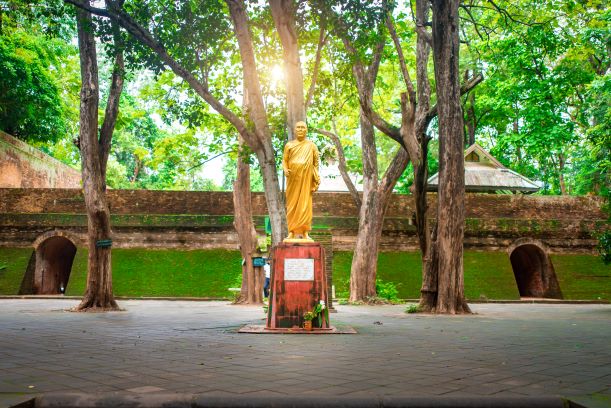
Wat Umong locates on Suthep Road which is away from “Ton Phayom” market and the canal road at the rear of Chiang Mai University about 500 meters. And then enters to the alley on the left about more 2 km. The name Wat Umong which means “Tunnel Temple” is not just only its title; instead there is the real tunnel at the place, and it is connectable, too. So, this is the impressive creation in particular for the thing that was built for more than 7 centuries. Moreover, the tunnel has the old mural painting inward which is one of the highlights of the temple that lures lots of tourists to visit and sightsee this holy place.
The bell-shaped pagoda;
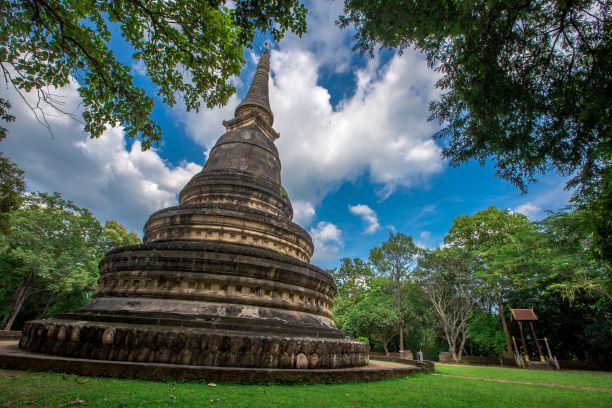
Beyond the tunnel is where the place to house the 700 years old pagoda in Lanna design which is said that it was built in the early 20th Buddhist Century. The bell-shaped pagoda with 3 tiers rounded shape similar to the layer of lotus petal with the pinnacle. The structure surrounded by the charming natural environment of diverse species of plant especially the greenery moss that is covering all through the space of the compound, pagoda, and the entrance of the tunnel. Consequently, the site is such an interesting appearance and is attractive to the tourists to take some pictures of the scenery here.
Engraved stone Buddha’s head;
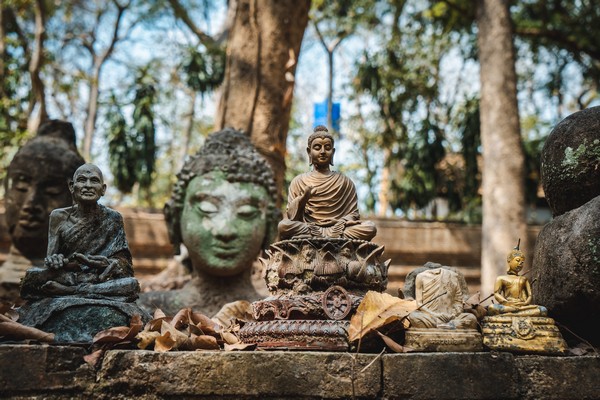
Front of the tunnel is an engraved stone Buddha’s head by Payao artisan during 1407-1557. All around the compound is tranquil and pleasant place environed with diverse species of plants, so that is an ideal woodlot for meditation practice, indeed. Besides, the rear of the temple is forestry plantation and animal sanctuary which is another promenade and excellent bird watching point.
Along the way to the temple, there are many religious and ancient objects that beautiful to experience which are;
The Inscription of Wat Umong
A stone which recorded the history of Wat Umong.
The Grand Pagoda
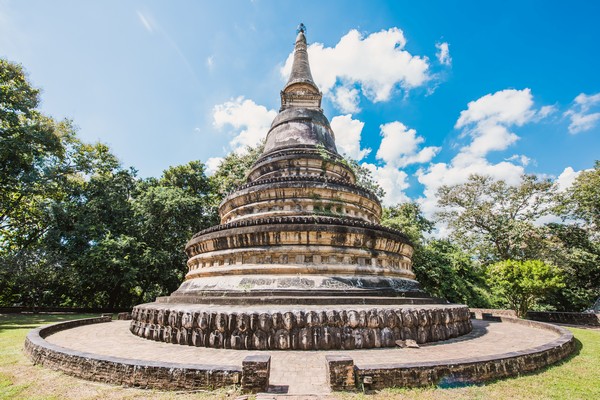
Situating at the foot of Doi Suthep the famous peak of Chiang Mai. The pagoda locates over the area connecting to the north of the tunnel within the compound. The pagoda at Wat Umong is bell-shaped which is the character of the early period of Lanna art that created in late of 20th Buddhist Century modified from one of the bell-shaped chedis of Pagan or Burma. Later at the beginning of 21st Buddhist Century, the pagoda renovated to be shapelier. Finally, during the 21st Buddhist Century the shape of the pagoda rapidly changed resulted from the influence of the Sukhothai art; also it is one among the significant pagodas of the early Lanna.
The creation of the pagoda began in the throne of King Mangrai that considered to build it in bell-shaped style then it was repaired by King Phra Muang Kaew and complemented the structure with the artistic fresco. At the base under the bell-shaped was modified at the pinnacle with the lotus flower shape followed to the Mon-Burmese pagoda design.
Nonetheless, the pagoda presently still maintains some original pattern which is the base within the 3-tier rounded structure in descending order as a platform to support the main bell-shaped structure. Upwards is a squared pedestal, and a funneled shape pinnacle consists of an essential part that called in Midland language as “Plong Chanai” (circular disk) and “Pli” (Plantain shaped pinnacle). Each layer of the round frame ornamented with the squared slots which this characteristic together with the large size of the structure is relevant to a format of Pagon pagoda design that constructed in the mid of 18th Buddhist Century. For example, the chedi at Thitsavadi Temple in Pwa saw Village in the southeast of Bagan, Myanmar.
Pillars of Ashoka
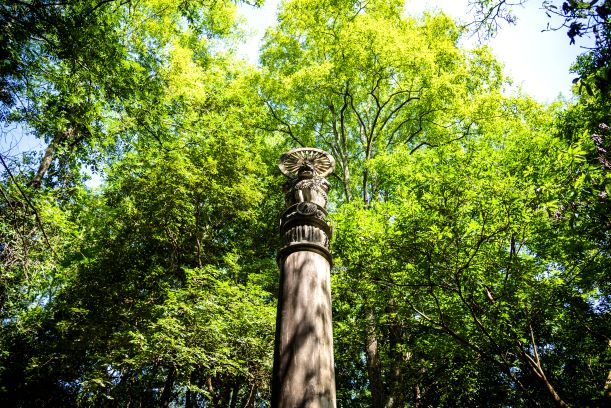
It is a replica of the Pillars of Ashoka to represent to the glory of the Buddhism in the ancient time, also to a remembrance of King Ashoka the Great. The pillars stand at the entrance of the tunnel was created in 1964 to recall the honor of King Ashoka, the significant patron of Buddhism and the first apostle who expanded the religious to the world. The Pillars of Ashoka is a vital establishing mark as same as ones discovered in Indian and Nepal in which anywhere the Pillars of Ashoka existed means the significant place in the life of Gautama Buddha and Buddhism itself.
Outdoor Museum, witness the Head of Buddha Statue the art by Payao artisan
Next to the entrance of the tunnel is an outdoor space where the heads of Buddha images lining around the area. This is another highlighted spot of the temple that lures lots of visitors to come here, partially a significant figure of Buddha’s head among the numerous Buddha statues and carved stone that line unevenly on the floor. Those figures made by Payao artisans during 1407-1557, and Chao Cheun Siroros and believers transferred them from the deserted temples in Payao in about 1968-1970.
Dhamma Puzzle Gallery
The building is a gallery to show the Dhamma Puzzle paintings which convey the teaching of Buddhism to the audience to apply those to their daily life.
Wat Umong Museum
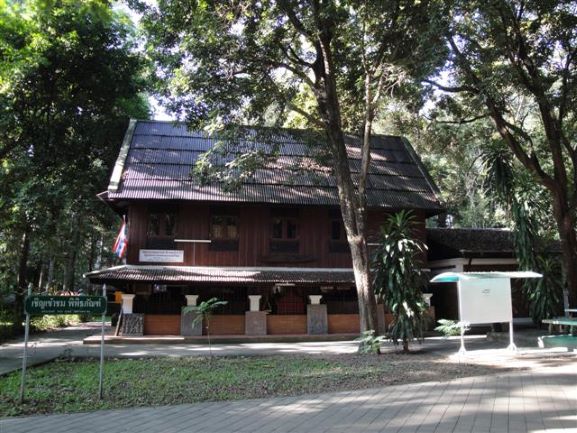
Wat Umong Museum or literally “Chalerm Phrakiat Museum” sited next to the tunnel and the grand pagoda. The museum opens 9.00am-noon and 1.00pm-4.00pm.
Thammakos Library
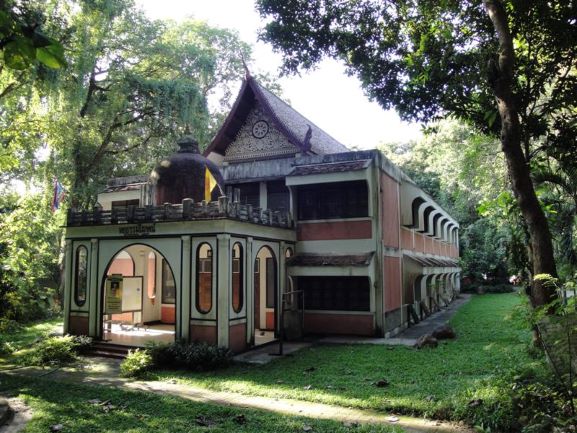
A 2-story Thai architecture that is a library offering the Buddhist teaching books downstairs and the second floor opens at the museum. The museum displays collection of the antiques that discovered within the compound, plus the appliances used inside the temple. For example, the group of bronze and brass Buddha images, the bronze receptacle for betel, engraved wood, ancient ceramics, goldwares, silverware, lacquerwares, weapons, records, photography of the bird mural painting inside the tunnel, images of the gathering of celestials in the chamber of Wat Umong, etc. Thammakos Library operates every day except the Buddhist holy day between 8.30am-4.00pm.
Furthermore, lots of other attractive things in the temple – the stairway ascending to the pagoda, the Naga Serpent ‘s Heads, Bodhisattva statue, and Suan Putthatham Office, for instance.
The Tunnel of Wat Umong
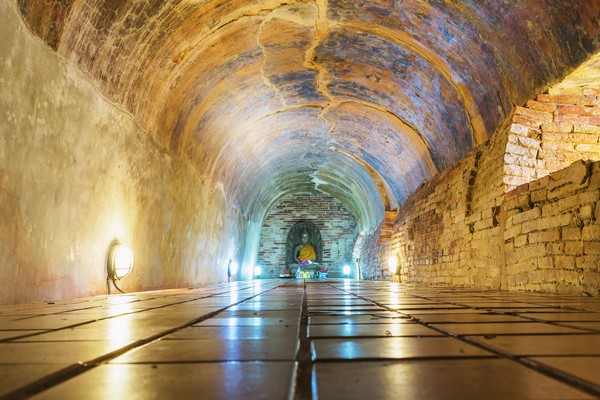
“Umong Thera Chan” is a name of the famous tunnel of Wat Umong is like the city wall with multiple entrances. In fact, we can access the temple from whichever aisle since they are all connectible. The best time for the photo opportunity inside the tunnel is in the morning because it’s less of the crowd which will pack at the monastery site. The location is becoming an in-trend tourist attraction of Chiang Mai at the moment.
Once you walk through the tunnel, then you would know how come the name of the temple is Wat Umong which means “the Tunnel Temple”. Apparently, the Buddha images and other sacred objects are available within the tunnel for the visitors to worship. The connectible aisles strike the eyes of the beholders with the elegant and magnificent art decorated inside the hall. Moreover, the tunnel is a pleasant climate and ventilation contrasting with the sweltering weather outside.
The Mural Painting in the Tunnel
The mural painting inside the vault that remains to be seen today is over the arch ceiling. The tunnel nestles continually to the pagoda in the north with the three main entrances facing to the east. The fourth channel in the center is the biggest one. Those which of the visible painting are the 1st, 2nd, and 3rd tunnel. Apart from that, the remained picture inside the tube mostly are faded away; therefore, the tracing painting technique by hand and computer are included to enhance the quality of the art. Accordingly, we can witness the fascinating and delicate mural painting of the ancient Lanna with more than 500 years old of age clearly.
Nowadays, the mural painting of Wat Umong is vanished in most part resulting lots of people think that it’s no more the art at the famous temple. However, referring to the historic discovery at the site found that it’s more than expectation. Consequently, the Department of Fine Arts supports the project by allocating the expenditure for the survey and preservation of the art here in late of 1999 to mid of 2000.
Maintenance and Restoration of the Paintings
Furthermore, Khun Patarut Sayasewi, chief of the preservation of the mural painting at Wat Umong of the Department of Fine Arts at that time also participated in repairing the picture by giving the advice and supervise the team to complete the project smoothly.
In part of maintenance and restoration of the painting, the team brought in a chemical procedure technique which begins at inspection, clean up the art, strengthen to the concrete wall and layers of the picture, together with the record of all process of the implementation – photography, plan, and drawings, etc. And during the process, the members of the team accidentally explored new painting inside the vault, too. The cause of it is the crack of the tunnel which allowed the rainwater to leak into the inner lead to the accumulation of limestone covering the pictures until they are limited optical. Thence, the task team tried to remove it by using the chemical solutions to soften the scale and sheered it by knife inch by inch to vanished. And the beautiful painting emerged at the end.
How to Get to Wat Umong
The temple opens to the public daily between 4.00am-9.00pm. To go to the holy place is
By Car:
Drives along the Suthep Road at the back of Chiang Mai University. Along the way, it’s plenty of the signages to guide the way to the temple. Once you arriving at the gangway make the turn left and drives more 1 km, you will notice the trisection. At the opposite is the entrance of Wat Umong.
Another route by using the outer ring road and before the junction at Suthep Road, please make the left turn which is the same entrance of The Wildlife Sanctuary Office, Doi Suthep. Then, drives straight forward you will spot the forks to the right and left (narrow road), keep heading and the entrance of the temple will be on the right.
By Public Transportation:
The tourist can get hire the pick-up truck service or the car on Grab application to reach the destination. However, for the local ones, please negotiate for the price before you get in.

